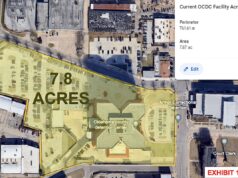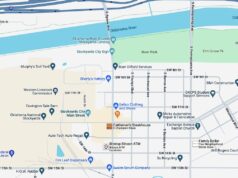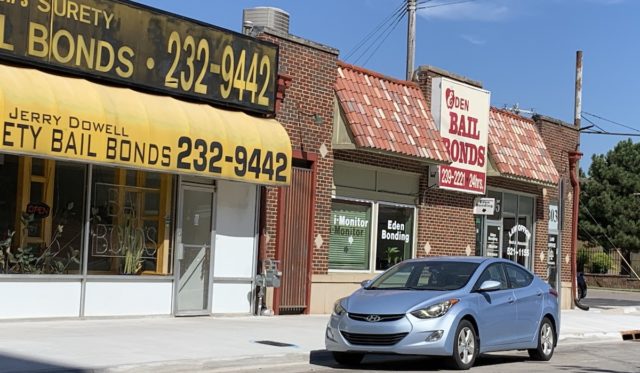

The conversation around Oklahoma County’s flawed jail and its proposed replacement has included topics ranging from how tall the new facility should be to what level of security inmates will find themselves in when, or if, it opens someday.
But a main topic of debate has been the question of size. How big is too big, and how much space is really needed? The current facility has seen significant overcrowding. Does that mean decision makers should build a much larger facility? Opponents say a bigger jail will only lead to an increased inmate population and will again become an overcrowded mess. At the same time, if the facility is too small, the expanding OKC metro area could quickly outgrow it, leading to the same problem.
Instead, the question some would like to focus on is how to lower the population of the jail, particularly by not jailing nonviolent low-level offenders. Diversion programs, which send offenders to rehabilitation programs instead of jail, can ease some of that problem. Bail reform could be another tool.
Cash on the barrel head
Currently, the most direct way for someone to get out of the Oklahoma County Jail is to secure the services of a bail bondsman. Typically, bondsmen charge a fee of about 10 percent. So if a judge sets bail at $10,000, a prisoner can pay the bail bondsman $1,000, and the bail bondsman then pays the court the entirety of the bail amount.
If and when the person returns for their court date, the bail bondsman gets the $10,000 back and keeps the $1,000 as a fee for having provided the money. Some bail companies offer payment plans, but those can come with interest rates that are sometimes determined by a client’s credit history and the crime they are accused of committing.
Some arrested individuals are released on their own recognizance, meaning they avoid the need for a bail bondsman.
But for those that can’t afford bondsman services, facing bail often means added time behind bars — not because of the severity of the crime or because of any danger they may pose society, but because they simply do not have enough money.
“Bail reform is definitely needed,” Oklahoma County Chief Public Defender Robert Ravitz told NonDoc. “There are too many people that are in jail who don’t need to be in jail who are not threats to anybody.”
Financial means influence outcomes
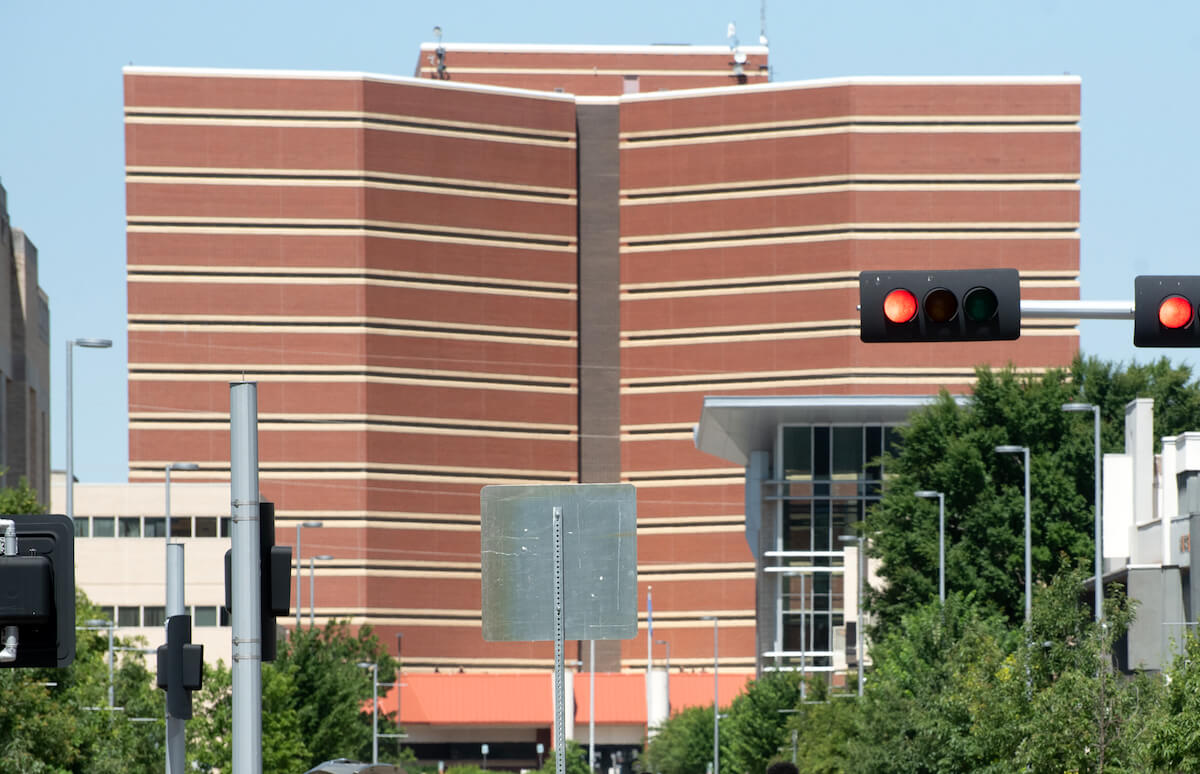
People in jail in the United States had a median annual income of about $15,000 prior to their incarceration, according to data from PrisonPolicy.org, an organization that works to raise awareness about over incarceration in the United States. Often, those in a county jail are poorer than those in state prison, and they are much poorer than those who are arrested and able to post bail.
“Imagine two people who commit the same crime and have the same criminal history, and neither one of them is at risk of committing a violent crime — they’re otherwise upstanding citizens — but they get arrested for the same low-level crime,” said Sandra Thompson, a law professor at the University of Houston. “One has money. The other doesn’t. The poor person sits in jail waiting. The DA will be willing to let them go if they plead guilty, and the judge might sentence them to time served, but now they have a criminal record. The person who was able to pay (bail) comes to court, and they’re much more likely to have their case dismissed. Research has shown this. So you have two totally different outcomes based on the ability to post bail.”
Thompson has served as an assistant district attorney in New York County and is currently a deputy monitor for the federal consent decree in the settlement of O’Donnell v. Harris County, a federal civil rights lawsuit that has caused Texas’ most populated county to essentially end the practice of requiring detainees accused of low-level, non-violent offenses to post bail in order to be released from jail.
What bail reform means depends on whom you ask, Thompson said. For some, it means ending cash bail altogether. For others, it’s about creating reforms that keep bail in place for some serious offenses, such as assault, while eliminating it for lower-level offenses, such as overdue speeding tickets.
“The phrase has come to mean different things to different people,” Thompson said. “But the conversation has been ongoing for a while. In Kentucky, they abolished for-profit bail bonding by statute in the 1970s. New Jersey did it 10 years ago. It has sort of continued. There has been growing awareness about commercial bonding and money bail. That issue comes up from criminal justice reformers when they look at the overall system and the damaging effects of money in the system, especially at the pretrial stage. It has a devastating impact on the whole system and creates a lot of unfair outcomes that all flow from the first decision of whether to release.”
Thompson said bail reform could still mean financial responsibility for the accused, but without the middleman.
“What it could look like is maybe the use of financial incentives to make sure they return to court, but not necessarily commercial bail bonding,” Thompson said. “There are four states that don’t allow commercial bail bondsmen, so we know there are places where the system can function without them.”
Thompson said the central issue is how to detach the question of whether someone should be in jail from their ability to pay to get out.
“At the end of the day, the question should not be how much money should a person pay, but is this person safe to release,” she said.
Beyond the issue of fairness, reformers also point to evidence that not being able to make bail can have reverberations that are felt for a lifetime. Those who end up in jail for long periods often find themselves in financial ruin, which can increase the risk of recidivism.
“They lose their job, if they had a job,” Ravitz said. “The family goes on welfare, and they’re put in a six-by-10 cell with two other people, and they get out about an hour a day, if that. If they weren’t an animal to begin with, when they spend a year in the county jail, they become one.”
Community bail funds aid some prisoners
Community bail funds have been created to help reduce the number of people who are being held pretrial because they cannot afford bail. Those funds, which are managed by organizations like the Bail Project, use money raised from the public and through grants to pay bail costs for detainees who otherwise wouldn’t be able to afford it.
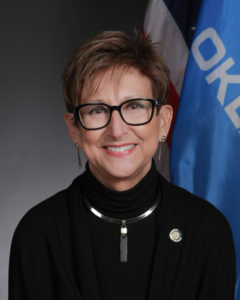
Those organizations also remind participants of court dates and in some cases provide transportation to and from court. When their cases end, the funds are returned to the organization. The Bail Project, which was started in 2018, has helped cover costs for more than 20,000 people in 22 states, including Oklahoma. Groups like the Richmond Community Bail Fund in Richmond, Virginia, can be found on the local level. Last year, former NFL quarterback Colin Kaepernick pledged $1 million to a community bail fund.
Rep. Meloyde Blancett (D-Tulsa) said programs like the Bail Project are a valuable tool when it comes to managing jail populations and discouraging recidivism.
“They’ve taken this pool of money they raise through grants and personal donations, and they interview detainees in jail,” Blancett said. “They don’t take on every client, because not every client is worthy of help, but the clients they do help, they pay their bail and they provide them with reminders for court dates, and they give them transportation if they need it. They connect them with social services. It’s a true wrap-around program.”
Jail population has declined
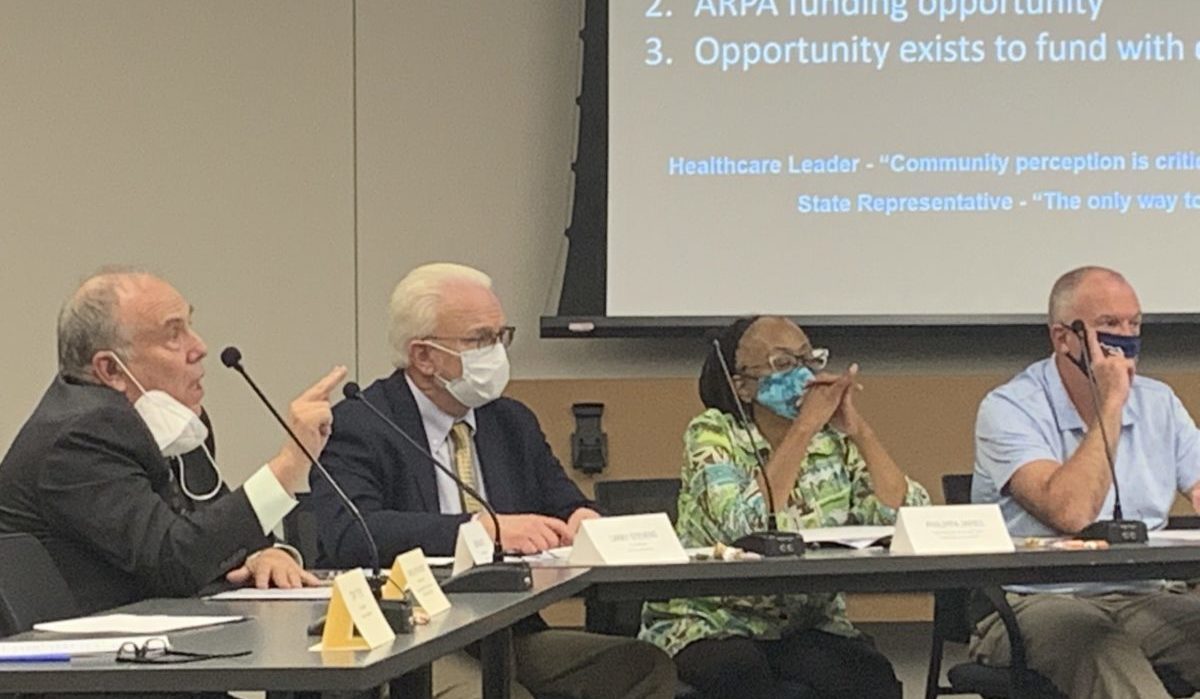
While the long saga of problems at the Oklahoma County Jail is atypical, the makeup of its population tracks with most jails of its size across the country. About 80 percent of those held are pretrial detainees, according to the Oklahoma County Criminal Justice Advisory Council, which was founded to identify critical problems within the county’s justice system and jail.
The council has created a six-part plan “to address over-incarceration and issues plaguing the county-wide justice system.” The plan recommends that the criminal justice system should keep low-level offenders out of jail, create alternatives for people with mental illness and substance abuse problems and stop jailing people who can’t pay fines, among other goals.
Combined with a voter-approved change in state law, those efforts have been effective so far. In June 2004, the jail’s average daily population was 2,617. For 2021, the daily average is 1,672, according to CJAC. The organization, which came together in 2015, recently launched a dashboard that reports the jail’s population and other data.
But while the daily average population of the Oklahoma County Jail has declined, those detained within are often inside for months. The average person housed at the jail has been there for 126 days, according to CJAC’s data.
“They don’t have $1,500 or whatever it is, so they sit in jail and basically wait for their court date,” Ravitz said. “The first court date could be within three weeks. Preliminary hearing could be a month to three months, depending on judges’ schedules. If they get held for trial, you’re looking at another six months to a year. I’m talking about somebody who could be potentially innocent of the crime.”
CJAC executive director Tim Tardibono said those who are released on bail generally fare better than those who are not.
“A majority of people in the jail have not yet been convicted of anything,” he said. “They are pretrial. The real question is why are they there awaiting trial when the data shows your chance of a successful defense is much better when you’re out in the community and you can show a judge that you can hold down a job and take care of yourself, and that you’re not a threat to the public.”
Ravitz said expansion of own-recognizance bonds should be another key tool in reducing jail population. Those bonds, often referred to as O.R. bonds, allow for people arrested to be released after signing a written promise to appear in court. They don’t require the services of a bail bondsman.
Ravitz said judges in Oklahoma County have adequate discretion to increase the use of O.R. bonds or lower bail amounts if they wanted to.
“The [District Attorney’s Office] doesn’t even show up in arraignment most of the time in Oklahoma County,” Ravitz said. “The judge is setting bond on his own. I see several people a day that, in my opinion, could be released that aren’t a threat to society that are put in jail. I think the O.R. bond program in Oklahoma County helps. I don’t think they get out near the number of people they should.”
Although he believes reform is needed, Ravitz said he does not see a way to end cash bail entirely.
“I don’t think you can ever eliminate cash bail. I think some of the bondsmen — just because somebody gets out on bail doesn’t mean they’re not likely to do another crime,” he said. “I think some of the bonds need to be supervised more. I agree with the DAs on that. I’m not in favor of totally eliminating cash bail. I don’t think it’s worked in other jurisdictions.”
Bail industry leery of reform attempts
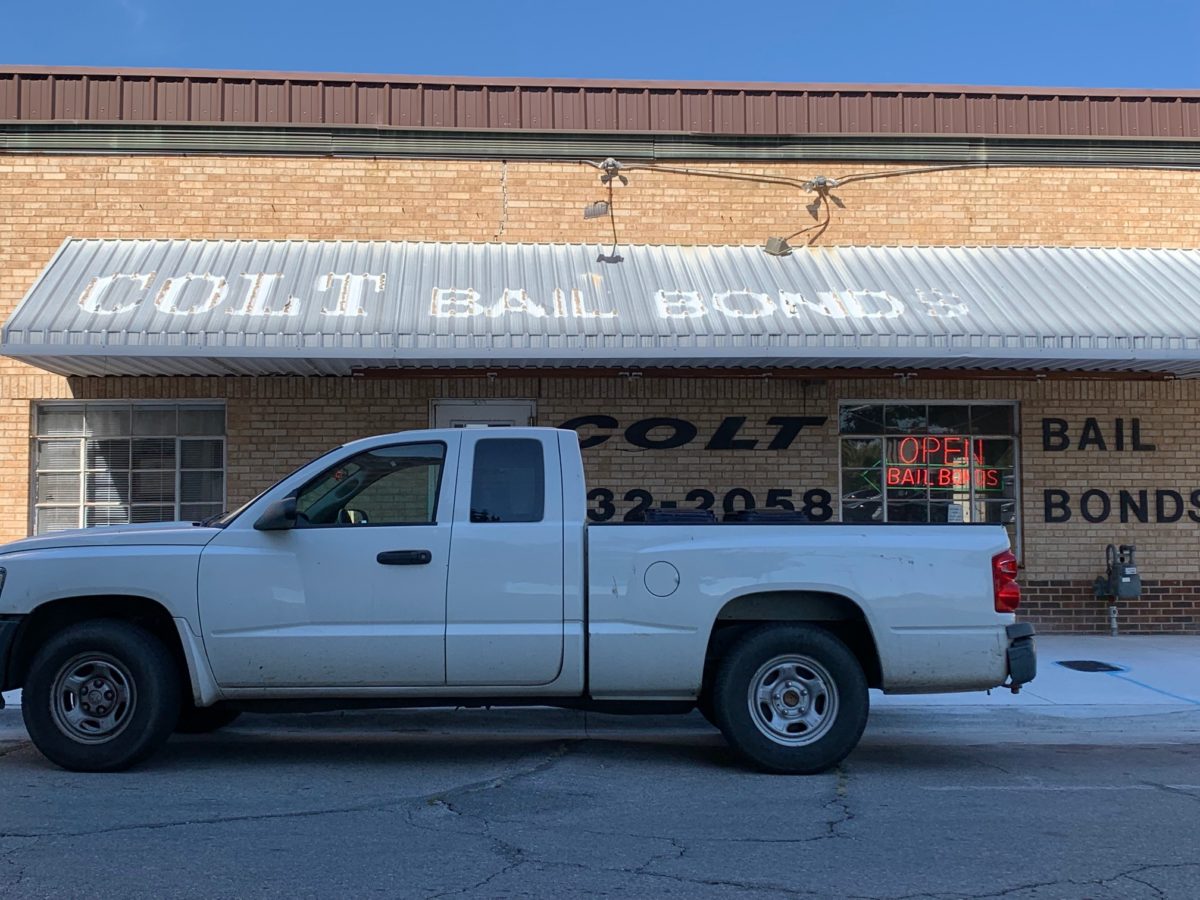
The bail bond industry is estimated to gross about $2 billion annually in the United States. The industry grew 25 percent from 2009 and 2016 but has since seen a decline, with the number of bail bonds written falling by 10 percent in 2018, according to the Wall Street Journal.
Ken Boyer operates Ken Boyer Bail Bonds and serves as the president of the Oklahoma Bondsman Association. He said the industry has a two-pronged purpose, providing defendants with expert help from someone who backs them financially, while also deploying CLEET-licensed bail enforcers to track down fugitives who abscond from their bail and court obligations.
“Defendants have the right to reasonable bail,” Boyer said. “When a family member hires a bail bondsman for a loved one, they are entering into a partnership of sorts with the bondsman. They know that they will only have to pay a fraction of the amount of sufficient surety set by the judge as bail. They know they are hiring an expert to help their loved one get through a difficult time in their life. They know, due to our American free market system, that the bondsman has a vested interest in making sure the defendant completes his court proceedings. Although occasionally we have to arrest a fugitive, we prefer not to unless they force us to by fleeing.”
Boyer said expanding O.R. bonds is not necessarily the answer to keeping jail populations low. In his experience, those released on O.R. bonds can actually be more trouble than those who pay for his services, something he said he has pointed out to legislators.
“We go to arraignments every day and make note of who appears and who fails to appear,” Boyer said. “Because of this information, I was able to show legislators who may have been considering socialized pretrial release that, in 2019, 62 percent of the people released on their own recognizance failed to appear at this first court date. Seventeen percent of the bail bond clients failed to appear.”
The financial tether between bondsman and defendants also promotes compliance, he said.
“Because of the financial obligation of the bondsman to the court, the defendants on bond are cleared up rather quickly, averaging about two weeks,” Boyer said. “The fugitives released on [O.R.] average about 22 months before being caught in a traffic stop or committing a new crime. The fugitive cannot work until they get their warrant cleared. Crime or sponging off someone that does work is all that is available to them. Bondsmen do walkthroughs with clients who have a warrant they want to clear without being arrested.”
Boyer said he sees clients from all walks of life, and that it’s often a misconception that those who seek out services of bail bondsmen are always poor.
“We do bonds for just about anything someone can be accused of,” he said. “We even get a few clients that want us to substitute a bond for their O.R. release, wanting the help of a professional. Even very wealthy families that could post a cash bail want our help, knowing they want our expertise working for them. The anti-bail folks argument claiming that people sit in jail because they can’t afford bail is absolutely false. Almost always when someone stays in jail it is because they have jumped bond several times in the past, or their record would indicate that they are a significant danger to the public. I have many clients making $20 weekly payments on their bond fee.”
Legislative and other avenues of reform
Transformative change in bail practices would almost certainly need to come from the Legislature, Blancett said. Reform of Oklahoma’s bail laws is something she sees as necessary, but a lack of specific data makes it hard to drill down into the bedrock of the problem or to convince other legislators of the need for bail reform.
“We don’t have a lot of data that tells us what we’re dealing with. Whether it is pretrial or post-conviction, or whatever,” Blancett said. “We need data that tells us how they got in jail and why they’re still there. What percentage are there for fines and fees, and what percentage are there for other nonviolent offenses? How many people are in jail due to negotiations with the DA or some other law enforcement agency because they can’t pay bail? We don’t know this data, so the argument on either side becomes solely based on emotion without hard and fast data, and then you’re always going to have the voices of law enforcement who say if you let people out they’re going to go out and commit murder.”
Blancett said the state would be well served to invest in gathering the necessary data, which has happened in other states.
“Michigan has done really well,” Blancett said. “They pushed through with a bipartisan multi-segment task force that included judges, law enforcement and victims, and they pushed through strategic reforms. They did a one-time analysis working with [Pew Research Center] to gather data. For example, one of those things was the top 10 reasons people are incarcerated in jails in that state, and they found that five of them were traffic related. My point is we don’t know until we get smarter about data. It’s just an emotional tug of war if you don’t have that. Data is agnostic.”
Oklahoma County District 2 Commissioner Brian Maughan has dealt with the county jail’s problems since he took office. He said technology has helped get some people out of jail who otherwise might have remained there.
“I think that with tracking devices now, our flight risks are greatly minimized, so I don’t know if we have to get them to pay a big price on bail as we do getting them on GPS tracking,” Maughan said. “I think that opens up a number of different previous offenses that we would have asked for a higher price on bail. And having perimeters even when they’re under house arrest, it’s cheaper than incarcerating them, for sure.”
But Maughan said large-scale policy reform on bail is out of the hands of county commissioners.
“It’s just unfortunately mostly a conversation between the district attorney and the judges, as far as what they will accept,” he said. “But I do know that through our court services we are able to more broadly offer GPS tracking, and it’s more cost-effective than it was before.”
District 3 Commissioner and jail trust member Kevin Calvey, who is also running for Oklahoma County district attorney, has said in jail trust meetings that he doesn’t believe people should be locked up for parking tickets but that there is a limit to possible reforms.
“There are reforms that can be looked at, but we shouldn’t be reducing bail so much because we end up with another Waukesha, Wisconsin, parade massacre because some dangerous person is let out of jail,” Calvey said during a recent jail trust meeting. “Dangerous people need to be in jail even in pretrial.”
Ravitz said the primary barriers to bail reform come from the industry and fear of political embarrassment among elected officials.
“Probably the biggest impediment is the bail bond lobby, which is extremely strong,” Ravitz said. “They’ve stopped the reform in the past. They don’t want bail reform, and they tell stories about people who aren’t coming to court, which aren’t even true. There’s some DAs who aren’t in favor of people getting out on bond, because then they can get them to plead guilty just to get out of jail and take probation, but I don’t think that is as big of a problem as the bail lobby.”












